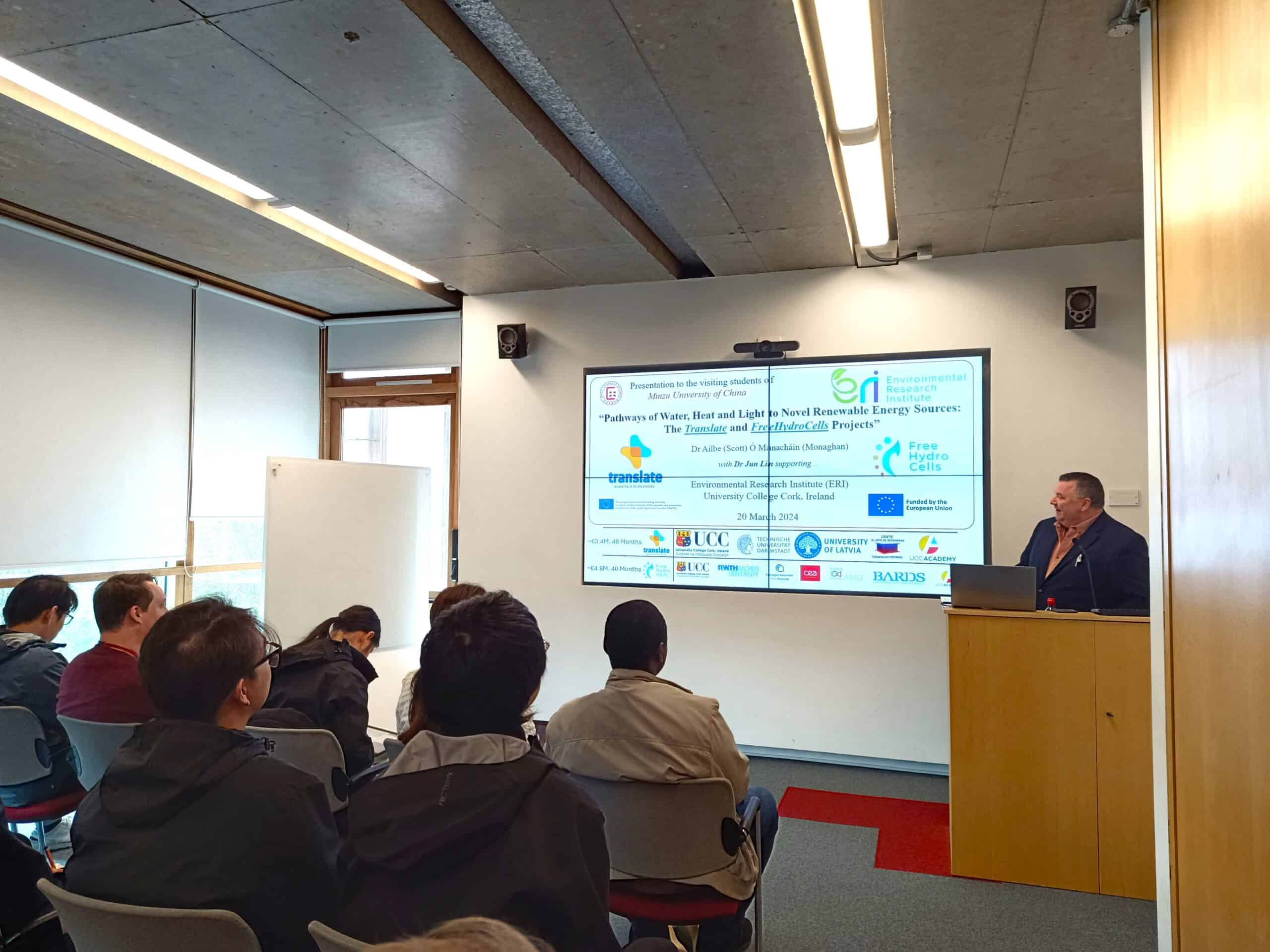Anna Power
The innovative work of the FreeHydroCells project was presented to a group of students visiting University College Cork from the Minzu University of China.
The group of around 30 undergraduate students from Minzu University of China visited the Environmental Research Institute at University College Cork to learn about some of the groundbreaking science being done at the Institute – in collaboration with the UCC departments of the School of Chemistry and Tyndall National Institute, as well as with external European partners – to further the transition to renewable energy.
UCC scientists Dr. Ailbe Ó Manacháin, FreeHydroCells Project Coordinator and Senior Staff Scientist, and Dr. Jun Lin, Scientific Researcher, spoke to the group on the topic. In a talk titled “Pathways of Water, Heat and Light to Novel Renewable Energy Sources“, the students were introduced to two exciting research projects in the green energy field – FreeHydroCells and TRANSLATE.

Dr. Ó Manacháin highlighted the potential of cheap and abundant renewable energy sources like sunlight, water and waste heat, and illustrated how these sources are being explored in novel ways at UCC.
FreeHydroCells aims to harness a free source of clean energy (solar energy or sunlight) in sufficient quantities to split water (an abundant resource) and make hydrogen fuel in the form of gas – with no harmful emissions in the process.
The TRANSLATE project meanwhile, aims to solve an energy efficiency problem – namely that, a staggering 66% of all energy we currently generate is lost as waste heat. To address this, researchers are exploring the creation of a novel device using sustainable materials like wood, based on low-cost ionic nanofluidic platform technology. The goal is to create a paradigm shift in the harvesting and storage of low-grade waste heat.
Meanwhile, Dr. Jun Lin gave the group an insight into the labs, equipment and materials used by the team for this important research, with collaboration from UCC’s Tyndall National Institute department. The state-of-the-art equipment includes atomic layer deposition (ALD) and chemical vapor deposition (CVD) tools, and electrical characterisation tools, including a Hall-effect measurement system. Commonly used 2D materials include Molybdenum disulfide (MoS2) and Transparent Conductive Oxides (TCOs).
In summarising the success of the event, Dr. Ó Manacháin commented that the presentation was “very well received”, and it is hoped that the ideas and innovations presented may inspire some of these students to consider pursuing their own ideas and ambitions in solving complex environmental problems.
Read the full presentation here.

